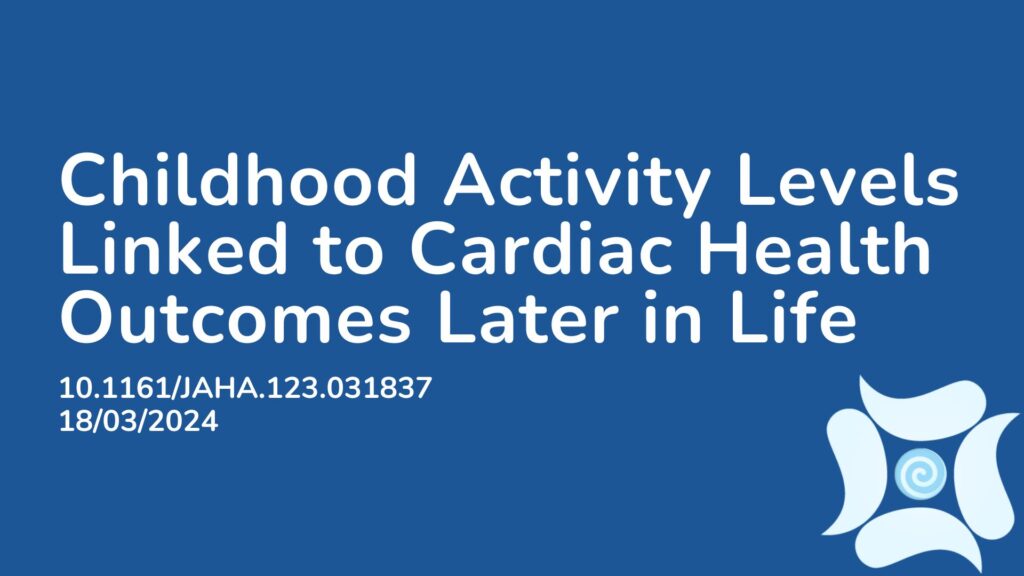Summary:
This study investigated the associations between sedentary time versus physical activity in childhood and cardiac function later in life. While it is currently known that increased physical activity may counteract negative cardiovascular health effects, it is not known whether having poor levels of activity as a child can have lasting effects. The study involved 153 adolescents, aged 6-8 years at baseline, 8-10 years at the 2-year follow-up, and 15-17 years at the 8-year follow-up. Sedentary time and physical activity levels between baseline and the 2-year follow-up, and between baseline and the 8-year follow-up were measured. Cardiac function was then analyzed. The results showed that moderate to vigorous physical activity from baseline to the 8-year follow-up (when the participants were aged 15-17) was associated with better cardiac health. Conversely, increased sedentary time was associated with poorer cardiac health. Overall, this study concludes that higher levels of sedentary time and lower levels of physical activity during childhood are associated with poorer cardiac outcomes in adolescents, underscoring the importance of increasing physical activity and reducing sedentary time from childhood.
Abstract:
Background: Increased physical activity (PA) may mitigate the negative cardiovascular health effects of sedentary behavior in adolescents. However, the relationship of PA and sedentary time from childhood with cardiac function in adolescence remains underexplored. Therefore, we investigated the associations of cumulative sedentary time and PA from childhood to adolescence with cardiac function in adolescence. Methods and Results: Participants were 153 adolescents (69 girls) who were aged 6 to 8 years at baseline, 8 to 10 years at 2‐year follow‐up, and 15 to 17 years at 8‐year follow‐up. Cumulative sedentary time and PA exposure between baseline and 2‐year follow‐up and between baseline and 8‐year follow‐up were measured using a combined accelerometer and heart rate monitor. Cardiac function was assessed using impedance cardiography at 8‐year follow‐up. The data were analyzed using linear regression analyses adjusted for age and sex. Cumulative moderate to vigorous PA (standardized regression coefficient [β]=−0.323 [95% CI, −0.527 to −0.119]) and vigorous PA (β=−0.295 [95% CI, −0.508 to −0.083]) from baseline to 8‐year follow‐up were inversely associated with cardiac work at 8‐year follow‐up. Conversely, cumulative sedentary time had a positive association (β=0.245 [95% CI, 0.092−0.398]). Cumulative vigorous PA from baseline to 8‐year follow‐up was inversely associated with cardiac work index at 8‐year follow‐up (β=−0.218 [95% CI, −0.436 to 0.000]). Conclusions: Higher levels of sedentary time and lower levels of PA during childhood were associated with higher cardiac work in adolescence, highlighting the importance of increasing PA and reducing sedentary time from childhood.
Article Publication Date: 18/03/2024
DOI: 10.1161/JAHA.123.031837




